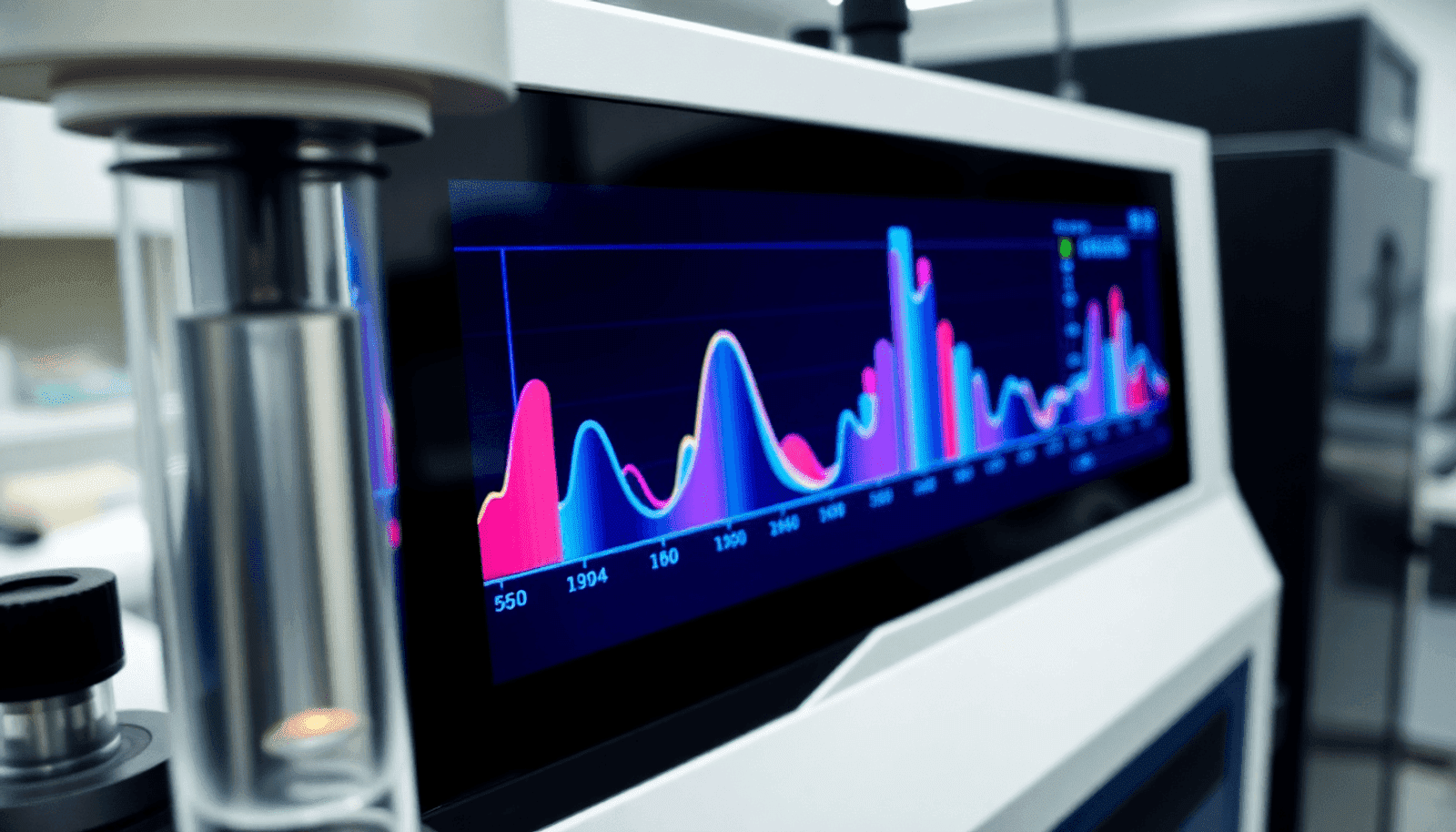by Ravindra Warang
7 minutes
Chromatography Detectors Explained: UV, RI, MS, and More
Explore chromatography detectors like UV, RI, MS, and fluorescence—each turning chemical signals into visible, actionable data.

In a busy pharmaceutical QC lab, a young analyst stared anxiously at a silent chromatogram.
The sample looked perfect. The mobile phase was freshly prepared. Yet not a single peak appeared on screen.
After hours of troubleshooting and a second set of eyes, the problem became clear: a clogged UV detector flow cell.
Once cleaned, the chromatogram came alive—peaks returned, data flowed, and a high-value injectable batch got approved for release.
That moment underscored a truth often overlooked: detection in chromatography doesn’t end with separation—it ends with effective detection.
Chromatography detectors are the instruments that bring invisible chemical separations to life.
They transform eluting compounds into readable signals, making qualitative and quantitative analysis possible.
Without them, even the most perfectly resolved compounds would remain unseen.
In this guide, we’ll explore how key detectors like the UV detector, RI detector, MS detector, and others work—and how to choose the right one for your application through proper detector selection for applications.
What Is a Detector in Chromatography?
A chromatography detector senses when an analyte exits the column and converts it into an electrical signal. This signal appears as a peak on a chromatogram, providing data on retention time and intensity. Each type of detector has unique strengths depending on what needs to be measured—whether it’s UV absorbance, refractive index, mass-to-charge ratio, or fluorescence. The choice of detector directly impacts sensitivity, selectivity, and the range of analytes that can be detected. Simply put: the detector determines what you can see—and what you might miss.
UV/Vis Detectors – The Most Common Workhorse
UV-Visible (UV/Vis) detectors are the most widely used in high-performance liquid chromatography (HPLC) systems. They measure absorbance of ultraviolet or visible light as compounds pass through the flow cell. Most organic compounds—especially those with conjugated systems—absorb UV light, making this detector ideal for pharmaceuticals, peptides, and many active pharmaceutical ingredients (APIs).
Common types include:
- Fixed-Wavelength Detectors (e.g., 254 nm): Simple, low-cost, routine analysis.
- Diode Array Detectors (DAD): Capture absorbance across multiple wavelengths simultaneously, useful for compound identification and purity profiling.
Fact: Approximately 80% of pharmaceutical HPLC methods use UV detection due to its robustness, affordability, and reproducibility.
Table: UV Detector Highlights
Type Wavelength Range Applications Strengths Fixed-Wavelength
Single λ (e.g., 254 nm)
Small molecules, routine assays
Inexpensive, easy to maintain
Diode Array (DAD)
190–800 nm
Peak purity, multi-compound detection
Spectral info, versatile and powerful
Refractive Index (RI) Detectors – Universal But Gentle
Refractive index (RI) detectors measure the change in refractive index between the mobile phase and the eluting compound. They're considered "universal" detectors because they respond to almost any compound that alters the refractive index. However, they are less sensitive than UV/Vis detectors and not compatible with gradient elution, limiting their application. RI detectors are ideal for detecting compounds that lack chromophores—like sugars, polymers, lipids, and alcohols—and are commonly used in gel permeation chromatography (GPC) and carbohydrate analysis.
Table: RI Detector Summary
Detector Ideal For Not Ideal For Key Limitation Refractive Index
Sugars, alcohols
Low-level detection, gradients
Sensitive to temperature and pressure changes
💡Tip: Always maintain temperature stability with RI detectors—fluctuations as small as 0.01°C can skew the baseline.
Fluorescence Detectors – Sensitive and Selective
Fluorescence detectors offer greater sensitivity than UV methods, especially for compounds that naturally fluoresce or can be derivatized. They excite molecules with a specific wavelength and detect emitted fluorescence at a different wavelength. This two-wavelength system provides excellent specificity and very low detection limits (down to ng/mL or lower). Used heavily in clinical, food safety, and forensic applications, fluorescence detectors shine where trace-level detection is critical. Common analytes include vitamins (e.g., riboflavin), polycyclic aromatic hydrocarbons, and certain drugs.
Fact: Fluorescence detection can be 10 to 1,000 times more sensitive than UV methods.
Incorporating various types of chromatography detectors is essential for optimizing analyte detection across different applications. Whether you're using mass spectrometry (MS) in conjunction with liquid chromatography (LC) or exploring the capabilities of electrochemical detectors (ECD), understanding the principles behind each detector type will enhance your analytical results.
Mass Spectrometry (MS) – The Power of Precision
Mass spectrometry is the most powerful detector available in chromatography.
It ionizes compounds and measures their mass-to-charge ratio (m/z), providing molecular weight and structural data.
MS detectors are used in LC–MS and GC–MS systems and are indispensable in bioanalysis, drug metabolism studies, and forensic toxicology.
There are multiple types of MS detectors:
- Quadrupole: Robust and good for quantification
- Time-of-Flight (TOF): High-resolution, fast scanning
- Ion Trap: Ideal for fragmentation studies
- Orbitrap: Ultra-high-resolution for complex mixtures
Mass spectrometry combines separation, identification, and quantification into one system—making it essential for regulatory bioanalytical studies.
Other Detectors Worth Knowing
Electrochemical Detectors (ECD)
- Used for redox-active substances like catecholamines, neurotransmitters, and antibiotics.
- Highly sensitive but analyte-specific and prone to electrode fouling.
Evaporative Light Scattering Detectors (ELSD)
- Used for non-volatile and non-chromophoric compounds like lipids and carbohydrates.
- Works by nebulizing and evaporating the mobile phase—detects light scattered by remaining analyte particles.
Conductivity Detectors
- Used in ion chromatography to detect ions like Na+, K+, Cl−.
- Measures electrical conductivity and is common in water analysis and pharmaceuticals.
Choosing the Right Detector
FAQs
What role do chromatography detectors play in chemical analysis?
Chromatography detectors such as UV, RI, and MS transform invisible chemical separations into visible signals, enabling both qualitative and quantitative analysis by sensing compounds exiting the column and converting them into electrical signals that appear as peaks on a chromatogram.
How does the choice of detector impact chromatography results?
Choosing the right detector affects sensitivity, selectivity, and the range of analytes that can be detected, ensuring accurate identification and quantification depending on compound properties like UV absorption, fluorescence, volatility, ionicity, and redox activity.
What are the common types of detectors used in HPLC systems?
The most common detectors in HPLC include UV/Vis detectors—offering fixed-wavelength and diode array options—due to their robustness and affordability; refractive index (RI) detectors ideal for sugars and lipids; fluorescence detectors for enhanced sensitivity with fluorescing compounds; and mass spectrometry (MS) for molecular weight and structural information.
When is it appropriate to use refractive index (RI) or evaporative light scattering detectors (ELSD)?
RI detectors are suitable for detecting compounds that alter refractive index such as sugars, polymers, and lipids but are incompatible with gradient elution. ELSDs detect non-volatile or non-chromophoric compounds like lipids and carbohydrates by nebulizing the mobile phase and measuring scattered light.




